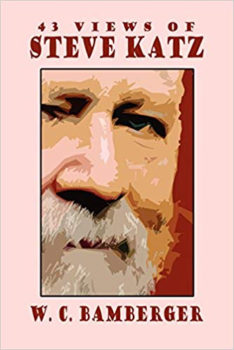“He listens well who takes notes.”
— Dante Alighieri
The spectrum of writers’ relationships with our notes is as broad as our relationships with our raw emotional material. We take notes in journals and on scraps of paper and in computer files. We record them in notebooks kept at bedside for easy access when they appear on the margins of sleep, and we jot them in the Notes apps on our phones when we’re out in the world. They take an equally wide variety of forms, as well: a snippet of speech that introduces us to a narrator with a story to tell, a gesture observed that reveals more than it should, and all the details we collect to slowly build a storyworld. We can fight against our notes, be enraptured by our notes, be slaves to our notes, but for most they are an indispensable part of the fiction process. Few sit down to write a novel, or even a traditional length story, without a specific detail or a particular line of dialogue that incites and shapes the work. And for many of us, we continue taking notes on a project after we’ve begun our first drafts, using them to plan a forthcoming scene, sketch out a character’s backstory, or speculate on what-ifs to come.
Yet writers’ notes tend to get thought of as separate from the artistic process. A tool for writing rather than a kind of writing itself. Prevailing wisdom suggests that a work of fiction doesn’t exist until it’s “born” on the page, but to me the note-filled time between conception and birth is a crucial phase to be celebrated. Without these scribblings, many first drafts won’t get written in the first place because their authors don’t know their characters and storyworlds well enough to bring them into being. Even in the revision process, writers can lose sight of their creations, falling into the trap of moving words around without asking important questions about the work that they might have posed through the ongoing dialogue of notetaking.
All notes we make are not of equal value, yet each of them has a role to play in the complex ecological process of bringing fiction from conception to fruition. They all involve—to bring us back to the Dante quote above—listening, and specifically to ourselves. I’d like to take a look at three kinds of notes and discuss their distinct functions, as well as offer some thoughts on our relationships with them.
Preparatory notes are the most intoxicating and liberating, because they come when our tales are intangible and everything is still possible. Stories, novels, and even multi-book series begin with seeds—notes on characters and worlds scribbled on sticky pads and restaurant napkins. Over time these germinate, putting up shoots that let us know what’s growing in the narrative territory we’ve staked out. Notes offer our tales shape and give us something to form a relationship with even before they are “born” as first drafts.
Without making use of preparatory notes, we put unnecessary pressure on those first drafts. We’re forced to hold the entire work in our heads, waiting for some mythical moment when we are “ready to write.” Whereas, if we work our way toward a project with notes, they can signal when we’re ready to write, allowing us the confidence to explore through the first draft rather than simply getting the story on the page. As we accumulate lines of dialogue, character habits, and sociocultural elements of the storyworld, we free our imaginations from having to hold onto every detail and encourage new narrative material to rise up. Preparatory notes are like the pre-draft visualizations athletes use to prepare themselves for a difficult competitive task. If we want rich first drafts that will throw us into robust revisions, then it’s in our best interest to be free—even profligate—with our preparatory notes.
 A strong habit of preparatory note-taking can also tell us a great deal about how “into” a piece we are and whether we’re ready to write it. I’m working on a new short story collection now, and for some stories my notes are little more than a title and a one-line concept. Others have pages of details, most of which I won’t use but all of which tell me that I’ve invested imaginatively in the story. I know, simply from the accumulation of notes, that I’ve spent enough time with my characters and storyworld to render them fully when the time comes to write. I’ll scan the notes and see what sticks—thanking the rest of them for helping me get to know my narrative territory—then start my first draft and probably never consult them again.
A strong habit of preparatory note-taking can also tell us a great deal about how “into” a piece we are and whether we’re ready to write it. I’m working on a new short story collection now, and for some stories my notes are little more than a title and a one-line concept. Others have pages of details, most of which I won’t use but all of which tell me that I’ve invested imaginatively in the story. I know, simply from the accumulation of notes, that I’ve spent enough time with my characters and storyworld to render them fully when the time comes to write. I’ll scan the notes and see what sticks—thanking the rest of them for helping me get to know my narrative territory—then start my first draft and probably never consult them again.
But not everything we take notes on ends up getting written, and sometimes this rudimentary form of drafting is all we need to satisfy ourselves about our fictional people and places. I have many folders with dialogue exchanges, setting details, and character observations for novels that I doubt I’ll ever write, but I document them anyway just to keep my imagination flowing. These projects don’t need to be written; they serve some other function in the ecosystem of my imagination that I don’t understand, and they demand little of me other than to think about them every once in awhile. If I ever change my mind and decide to write them, then my notes give me copious evidence that I’ve spent enough time in the storyworld to write the work.
Architectural notes help us structure our tales, and their usefulness comes to the foreground after we’ve reached a critical mass of preparatory notes. They’re more mathematical and logistical, because they concern the unfolding of plot. And while they may be entwined with the imaginative work of preparatory notes on character and storyworld, or arise from them, they serve a different function: to formulate a coherent and streamlined spine for our narratives. To help us see the forest for the trees. Once we have the basic architecture, conventional wisdom says, our first sentence seems right around the corner.
Despite their utility, an over-reliance on architectural notes can get in the way. For as straightforward and utilitarian as they might seem, the act of making them cohere puts our tales at a far greater risk of failure than character-centric preparatory notes (which have no need to cohere at all). How likely are we to bail out of a project or declare it cursed forever when it’s still in the early, glamorous, seed-sowing stage? Not very. But we are likely to do that when we’re struggling to get the darned plot worked out. If we’re heavily invested in plot, we’re likely to put a great deal of effort into creating airtight outlines. This puts pressure on us even before we write our first sentence, giving us plenty of reason to quit if things aren’t perfect. It also encourages self-enslavement throughout our first drafts, since we’re likely to protect our high investment in architectural notes by sticking closely to them. This can lead to staleness and lack of discovery. If we already know exactly how everything turns out, what’s the fun of writing?
I’ve never been much of a plot outliner myself, though I’ve tried it because writers I respect use this tool. My worst outcomes happen when I get too detailed with the architectural machinations and consult them while drafting. Writing those first drafts felt like working with a paint-by-numbers kit. My best outcomes happen when I work out only a skeletal plot. I don’t reorder my architectural notes like they’re sacred, but consult them before I write out a synopsis from scratch that helps me understand the territory of the tale. Then I set my original notes aside and don’t look at them once my first sentence comes out. The notes serve their purpose, birthing the next phase of the project, and are done.
Synthesizing notes come once a draft has started, and they guide us through future revisions. They address deep issues of character and storyworld too big and thorny to be dealt with mid-draft. They often come in the form of questions that we’ll need time—both on the page and off—to work through. Why does Dave hate Lin so much? or What does the rock climbing wall mean to this town? These are great opportunities to dive deeper into our tales, and taking the time to address them can make our projects more integrated by pulling together the disparate forces that have been moving through them during the preparatory stage and in drafting. Taking time to voice these larger questions between (or even during) drafts can help us identify opportunities in our work that we haven’t yet explored. We tend to ruminate over this type of note the longest, because we know our projects can’t go on until the big questions are addressed. Once we’ve done that, we’re ready for the next draft. If we don’t do it? Well, the draft sits there, patiently waiting for us to figure things out.
Another type of synthesizing note concerns our own storytelling processes, and these guide us in our ongoing inner dialogue about how to revise our work and bring it toward completion. I’ve argued elsewhere on FWR that revision can’t simply be a matter of moving words around or cutting them to achieve some mythical perfect tautness. Each revision needs to have a controlling idea, and our synthesizing notes can help us shape that. Narrator needs to notice the city more or Show the shared history of Sam and Dave. These notes, if we cultivate them and listen to them, can give us controlling ideas for subsequent revisions so that we can approach them more purposefully.
Each species of note can help us move our fiction projects on the path to their goal. But we can also cling to them excessively, paralyzing ourselves. Though the possibility of clinging is most dangerous for highly-detailed plot outlines, it can happen anywhere along the line. We can become, even when working alone, like the fiction workshop victim who feels they must incorporate every piece of critique from everyone in the group. In the worst-case scenario, our notes become workshop colleagues who we need to please.
This approach only ends up denaturing our work because not all notes are created equal. Some are revelations, while others are eminently chuckable. They don’t all rise to the top because they don’t all need to rise to the top. But if we use them freely, knowing that not all of them survive, we develop over time a sense of which ones to heed. There is no continuous middle ground to be found with notes—no perfect path that one finds magically with experience. How we use them and what we expect of them changes from project to project, and within a project it changes from phase to phase. But if you learn to use notes freely, you’ll teach yourself how to cut to the core of things more decisively, because you’ll be listening to yourself better than ever.







